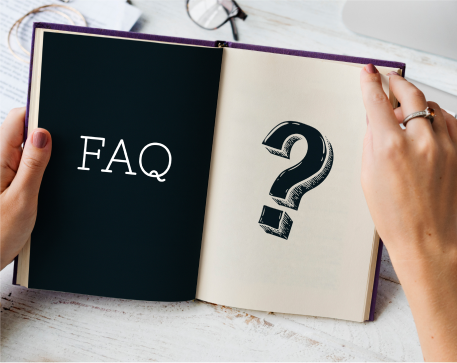Ready to learn?
Take the first step toward achieving your educational goals. Whether you’re preparing for exams or expanding your knowledge, getting started is just a click away. Join us today and unlock your full potential
832, utkarsh bhawan, near mandap restaurant, 9th chopasani road, jodhpur rajasthan - 342003
support@utkarsh.com
+91-9829213213
Support
Learning Resources
Rajasthan Govt Exams
Central Govt Exams
Civil Services Exams
Nursing Exams
School Tuitions
Other State Govt Exams
Agriculture Exams
College Entrance Exams
Miscellaneous Exams

© 2025 Utkarsh Classes & Edutech Pvt. Ltd. All Rights Reserved
Home
State Current Affairs
State news
President Rule Imposed in Manipur after CM Biren Singh's resignation

Utkarsh Classes
Updated: 14 Feb 2025
4 Min Read

The central government has imposed President's Rule in Manipur on 13 February 2025 under the provision of Article 356 of the constitution. The President's Rule was imposed four days after the resignation of N Biren Singh as the Chief Minister of Manipur.
A notification regarding the imposition of the President’s rule in the state was issued by the Union Home Ministry on 13 February 2025 after President Murmu was satisfied that there has been a breakdown of constitutional machinery in the state following the report of the State Governor Ajay Kumar Bhalla.
The President has placed the Manipur state assembly under suspended animation. The term of the current of the 12 thManipur Legislative Assembly ends in 2027.
This is the 11th time that President rule has been imposed in Manipur. Amongst states in India, President’s rule has been imposed a maximum 11 times in Manipur.
Manipur has been rocked by ethnic violence between the majority Meitei community and the minority Kuki communities since May 2023 in which more than 250 people have died and thousands displaced.
The four time Chief Minister N.Biren Singh who led the BJP government in the state, resigned on 9 February 2025 after meeting with the Union Home Minister Amit Shah and BJP President
J P Nadda in New Delhi.
In the 60 member Manipur Legislative Assembly, BJP has 37 members. The government was supported by the 6 members of the National people’s Party (NPP) and the 2 members of the Kuki People’s Alliance.
Both the parties later withdrew support to the N Biren Singh government in November 2024 ,protesting against the continuing ethnic violence in the state.
Under Article 356 of the constitution, if the President is satisfied that there has been a breakdown of the constitutional machinery in a state, the President can dismiss the state government and dissolve or suspend the state legislative assembly.
The President can take this action on the basis of the report of the State Governor or otherwise.
It is popularly called as President’s rule or Governor’s rule because all the executive power of the state government is assumed by the President, who in turns delegates this power to the state governor.
All the executive power of the state is transferred to the President.
In case of dissolution or suspension of the state legislative assembly, the legislative function of the state is performed by the Parliament. It means the Parliament will pass the state budget etc of the state during the President's rule.
There is no impact on the power and jurisdiction of the High Court.
There is no effect on the fundamental rights of the citizens residing in the state.
Duration of the President’s Rule
The President rule is valid for a period of 6 months and it can be extended for further 6 months if it is approved by the Parliament with a simple majority.
The President rule can be imposed for a continuous maximum period of 3 years in a state.
However, after one year , the President rule can be extended by the Parliament only in either of the conditions:
Article 356 has been one of the most misused articles of the Indian constitution. It has been liberally used by the central government to dismiss state governments ruled by opposition parties in the state. However after the Supreme Court judgement in the S.R.Bommai case in 1994, the misuse of the Article 356 has almost stopped.
President Rule has been imposed 135 times since 26 January 1956 when the constitution was promulgated.
First Time- in Punjab on 20th June 1951.
Maximum times - Manipur (11), Uttar Pradesh (10),Jammu and Kashmir and Punjab (9 times each).
Longest time period - Jammu and Kashmir 4668 days(12 years 9 months), Punjab 3878 days (10 years 7 months), Puducherry -2739 days.
Maximum use of Article 356 by a Prime Minister
Indira Gandhi - 51 times in her almost 16 years of rule
Pandit Nehru -7 times
Chandrashekhar, Atal Bihari Vajpayee, Chaudhary Charan Singh - 5 times each
Never been used by a Prime Minister -Inder Kumar Gujral is the only Prime Minister during whose tenure the Article 356 was not used.
Top Posts
Popular Tags
Economy
State news
Death
Person in News
Place in News
Himachal Pradesh
Uttrakhand
Art and Culture
Government Scheme
Science
Supreme Court
Tribe
Energy
Environment
Agriculture
Award and Honour
Uttar Pradesh
Supreme Court
Important Day
Transport
Science and Technology
Summit and Conference
Bill and Act
Haryana
Madhya Pradesh
Election
Industry
Infrastructure
Tourism
Frequently asked questions

Still have questions?
Can't find the answer you're looking for? Please contact our friendly team.
Visit an Offline Centre Near to You.

Download Current Affairs PDF Free
Stay updated with Daily & Monthly PDFs + Kumar Sir Classes